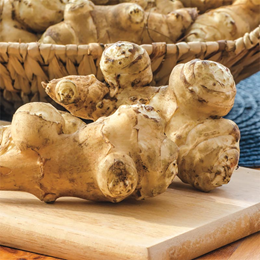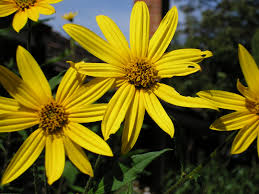

John Parkinson, English herbalist and Botanist described the sunchoke in 1729 as being widely grown and having grown very common in London. In 1720, Edward Phillips defined it as a plant near of the same nature as potatoes.
Most people know that the Jerusalem Artichoke, aka sunchoke, Canadian truffle, or potatoes of Canada, or the French is “topinambour” an American plant eaten by Native Americans, colonists, and which continued in use until roughly after the Great Depression when it fell mostly out of favor, becoming viewed as poor man’s food by those who lived off what they could harvest around their homes and farms.
Nehemiah Grew, M.D. and Fellow of the Royal Society published in London, “IDEA of a Phytological History Propounded. Together with a Continuation of the Anatomy of Vegetables Particularly Professed upon Roots and an Account of the Vegetation of Roots”, in 1673 in which he included the Jerusalem Artichoke which came to England from the Americas.
“The Jerusalem artichoke is a hardy tuberous-rooted perennial plant, a species of the family of Helianthus or Sun-flower, growing with a cluster of large irregular, tuberous, fleshy roots, which are the eatable parts; in best perfection in autumn and winter, till the spring; shoots up tall single stems annually in the spring, several feet high, furnished with large broad leaves, and crowned by a smallish, radiated, yellow, compound flower; is raised by cuttings of the roots, or whole; planted in the spring, one crop annually, in rows a yard distance; and the roots attain perfection the same year, about September or October, continuing good all winter till April or May, then begin to sprout, waste, and decay.” – Abercrombie, John. “The Complete Kitchen Gardener, and Hot-Bed Forcer”. 1789.
Explorer and French colonist Samuel de Champlain took the plant to France and Lewis and Clark ate them on their grand exploration.
In 1847, a gentleman shipped four bushels of the tubers to the editor of “The Farmer and Mechanic” magazine hoping they could be shipped to Ireland for planting to alleviate the suffering caused from the potato famine.
Every account encountered says these are impossible to eradicate after starting, however, I just put out my third planting and have struggled to get them to grow. From what I planted last year I had three plants this year. The flowers are quite nice, a sunny yellow with yellow centers, and about six feet tall.
They may be cooked any way the potato can, i.e. soup (called Palestine Soup), fritters, souffle, fried chips, boiled, devilled chips, Lyonnaise, mashed, pan fried with onions, cooked with white or cream sauce, au-gratin, salad, and pickled. Always slice them into salted water with lemon juice to prevent darkening. Drain and pat dry before frying.
Jerusalem Artichoke salad is made by layering sliced boiled sunchokes and onion, and dressing with mayonnaise or oil and vinegar.
Fritters: Boil the sunchokes not more than 15 minutes, slice them ¼ inch thick, dip in flour and fry till a golden brown.
Fried: Scrape and wash the sunchokes, slice or cut like French fries, deep fry until golden brown, serve with lemon juice or butter.


You must be logged in to post a comment.